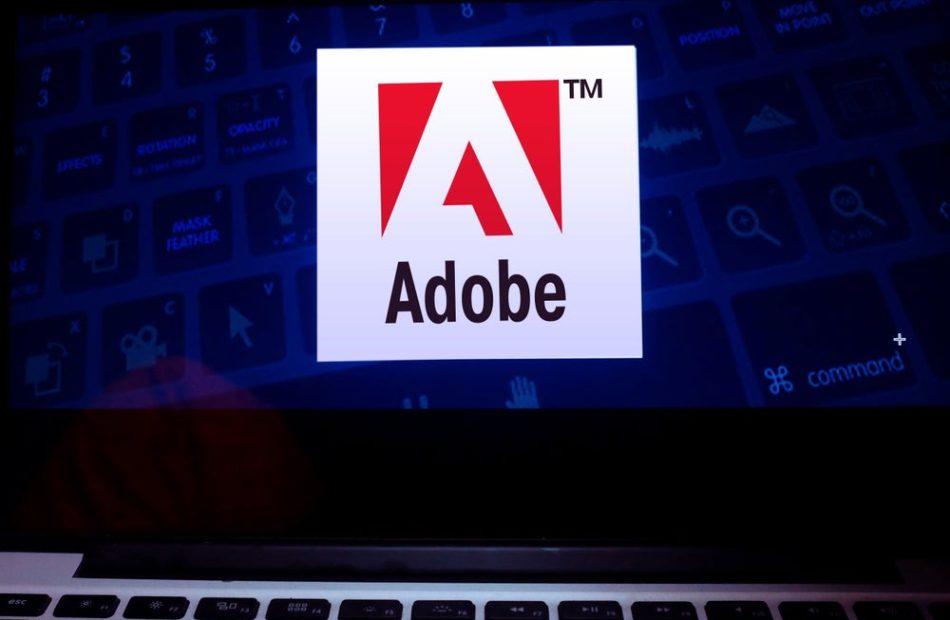Cannabis Regulator Whistleblower Sues California, Alleges Retaliation After Reporting Lab Testing Misconduct
Tanisha Bogans, a former deputy director at California’s Department of Cannabis Control (DCC), has filed a lawsuit alleging wrongful termination after raising concerns about misconduct in the state’s cannabis testing labs.
The lawsuit, filed in Los Angeles County Superior Court, claims that Bogans was fired in January 2024 after pushing for action on reports of testing labs falsifying THC potency results and covering up product contamination, reported Green Market Report.
Bogans, who was hired in December 2022 to oversee lab compliance, alleges that her superiors –DCC Director Nicole Elliott and Chief Deputy Director Rasha Salama – ignored multiple warnings from labs and industry groups about systemic issues.
In June 2023, U.S. Cannabis Laboratories alerted the DCC to widespread THC potency inflation, claiming that labs were inflating numbers to satisfy brand clients, which could mislead consumers and undermine the legal market.
- Get Benzinga’s exclusive analysis and the top news about the cannabis industry and markets daily in your inbox for free. Subscribe to our newsletter here. If you’re serious about the business, you can’t afford to miss out.
Despite these warnings, Bogans claims that her superiors refused to act.
She also reported finding evidence of pesticides and even fentanyl in products sold in licensed dispensaries.
After contacting the Department of Justice (DOJ) about the violations, Bogans says she was reprimanded and later excluded from key meetings.
The lawsuit also alleges that a whistleblower informed Bogans in December 2023 that Gold Mountain Distribution, co-owned by La Puente City Councilman David Argudo, was operating without proper licenses.
Bogans claims her attempts to report this were ignored, and she was terminated the following month.
The lawsuit seeks damages for whistleblower retaliation and emotional distress.
Recently, a lab in California did not get its license renewed due to accusations of fake test results .
Cover: AI generated image
Market News and Data brought to you by Benzinga APIs
© 2024 Benzinga.com. Benzinga does not provide investment advice. All rights reserved.
UAW's rift with Stellantis raises fear that some US auto jobs could vanish
STERLING HEIGHTS, Mich. (AP) — To Ruth Breeden, who assembles Ram trucks in this Detroit suburb, a simmering dispute between the United Auto Workers and Stellantis isn’t merely about whether her employer will reopen a distant factory in Illinois. To her, the standoff is a danger sign for all UAW workers.
Stellantis had pledged to reopen the factory in Belvidere, Illinois, under a contract it forged last year with the union. But the reopening was delayed given what the company calls unfavorable “market conditions.”
Stellantis says it will eventually reopen the plant. But no date has been given to restart it or open a new battery plant and a parts warehouse, both of which were also promised in the contract that ended the UAW’s strike against Stellantis last year. At stake are over 2,700 jobs.
Breeden and other union members fear that Stellantis will break other commitments, jeopardizing their jobs.
“It’s the whole company,” she said at a union rally last month near her factory. “Who knows which plant is next?”
Union leaders have threatened to strike, a move that could extend beyond Stellantis. Labor experts say its two Detroit-area rivals, Ford and General Motors, are watching as they consider strategies that include whether to move future production out of the U.S.
Detroit automakers have been expanding production in Mexico for years. And after last fall’s strikes shut down a Ford truck plant, its CEO warned the company would rethink where it builds new vehicles.
“There’s plenty of history of the U.S. manufacturing sector moving its operations to low-wage countries,” said Bob Bruno, a labor and employment relations professor at the University of Illinois. “It seems reasonable to me for the UAW to be concerned about not opening here, not investing here.”
In February 2023, the last Jeep Cherokee SUV rolled off the assembly line in Belvidere, about an hour northwest of Chicago, and 1,350 workers were laid off. Stellantis had planned to close the factory.
After six-week strikes against all three Detroit automakers last fall, each company signed a new contract with the UAW. Stellantis agreed to reopen Belvidere Assembly in 2027, with plans to build up to 100,000 electric and gas-powered midsize pickups annually.
It also agreed to open a parts hub in Belvidere this year and an electric-vehicle battery factory with 1,300 workers in 2028. In all, the company pledged $18.9 billion of U.S. investments during the contract, which runs until April 2028.
So promising was the prospect of reopening Belvidere that it drew a celebratory visit from President Joe Biden and a pledge of $335 million in federal dollars to revamp the 5-million-square-foot plant.
A year later, there’s no parts hub and no definitive plan to open the assembly and battery plants, setting off alarms among union members.
On Wednesday, Stellantis said it would spend roughly $400 million to revamp three Michigan factories to build electric vehicles or parts. Breeden’s plant will receive about $235 million of the money, which was included in the contract.
Still, Breeden fears that CEO Carlos Tavares, who talks frequently about cutting costs, wants to move more production to low-wage Mexico, where the company already builds Ram pickups.
“The truth is Stellantis doesn’t want to invest in America,” UAW President Shawn Fain said in a recent video.
Tavares has said that one reason Stellantis needs to slash costs is to make electric vehicles — which cost roughly 40% more to build than gas-powered cars do — affordable to typical customers.
Experts say the Belvidere matter could end up in court.
In August, Stellantis announced that it would stop making older Ram pickups at a plant in Warren, Michigan, and it will lay off up to 2,400 workers. It was the latest sign that Stellantis’ U.S. workers face an uncertain future, said Marick Masters, business professor emeritus at Wayne State University.
Stellantis said it stands by its commitment to Belvidere, but said it needs the delay so it can afford to remain competitive and preserve U.S. factory jobs.
“It is critical that the business case for all investments is aligned with market conditions and our ability to accommodate a wide range of consumer demands,” Stellantis said in a statement.
The company noted language in a letter detailing investments that’s part of the contract. It says Stellantis and the UAW agree that investment and jobs in North America are “contingent upon plant performance, changes in market conditions, and consumer demand continuing to generate sustainable and profitable (sales) volumes.”
Maite Tapia, associate professor at Michigan State University’s School of Human Resources and Labor Relations, noted that language in union contracts is often intended to appease both parties.
The UAW counters that its contract authorizes strikes over plant closures and broken investment promises.
Stellantis, which has been slow to shift to increasingly popular lower-cost vehicles, has struggled this year. Its U.S. sales fell nearly 16% in the first half. Profits tumbled 50%.
Still, overall U.S. new-vehicle sales rose 2.4% through June. The union argues that GM and Ford are doing well and that Stellantis would be, too, if not for Tavares’ poor management.
Fueling angst on assembly lines is a February statement by Ford CEO Jim Farley, who said his company would rethink where it builds vehicles. Farley sounded that warning after the 2023 strikes shut down Ford’s largest and most profitable plant, which makes heavy-duty trucks in Louisville, Kentucky. In July, Ford said it would revamp a factory in Ontario to build the same trucks.
Before last year’s strikes, Farley said, Ford kept making pickups in the United States despite higher labor costs and competitors that build them in Mexico.
Fain scoffed at the notion that Detroit automakers will move production out of the U.S. because of a more aggressive union. He complained that over the past 20 years, automakers have closed or sold 65 factories during a period when the UAW was more cooperative.
“That’s hundreds of thousands of jobs that cost us,” Fain said.
In the meantime, the standoff with Stellantis over Belvidere has led the UAW to threaten to strike in October.
“We expect them to honor the commitment they made,” Fain said. “If they don’t, we put language in this agreement so that we can hold them accountable. And we’re going to.”
U.S. Steel Moves 7.0% Higher: Will This Strength Last?
United States Steel X shares rallied 7% in the last trading session to close at $33.39. This move can be attributable to notable volume with a higher number of shares being traded than in a typical session. This compares to the stock’s 25.5% loss over the past four weeks.
U.S. Steel’s stock popped on reports that a senior Nippon Steel executive traveled to Washington to meet with U.S. officials in a last-ditch effort to save Nippon Steel’s proposed $14.9 billion takeover of U.S. Steel following reports a week ago that the Biden administration was preparing to block the deal.
This steel maker is expected to post quarterly earnings of $0.37 per share in its upcoming report, which represents a year-over-year change of -73.6%. Revenues are expected to be $3.77 billion, down 14.8% from the year-ago quarter.
Earnings and revenue growth expectations certainly give a good sense of the potential strength in a stock, but empirical research shows that trends in earnings estimate revisions are strongly correlated with near-term stock price movements.
For U.S. Steel, the consensus EPS estimate for the quarter has been revised 26.1% lower over the last 30 days to the current level. And a negative trend in earnings estimate revisions doesn’t usually translate into price appreciation. So, make sure to keep an eye on X going forward to see if this recent jump can turn into more strength down the road.
The stock currently carries a Zacks Rank #3 (Hold).
U.S. Steel is a member of the Zacks Steel – Producers industry. One other stock in the same industry, Commercial Metals CMC, finished the last trading session 1% lower at $48.67. CMC has returned -8.3% over the past month.
Commercial Metals’ consensus EPS estimate for the upcoming report has remained unchanged over the past month at $1.14. Compared to the company’s year-ago EPS, this represents a change of -32.5%. Commercial Metals currently boasts a Zacks Rank of #3 (Hold).
Market News and Data brought to you by Benzinga APIs
© 2024 Benzinga.com. Benzinga does not provide investment advice. All rights reserved.
Tanger Recent Insider Activity
Leslie Gallardo Swanson, EVP at Tanger SKT, disclosed an insider sell on September 11, according to a recent SEC filing.
What Happened: Swanson opted to sell 17,900 shares of Tanger, according to a Form 4 filing with the U.S. Securities and Exchange Commission on Wednesday. The transaction’s total worth stands at $550,246.
Tanger‘s shares are actively trading at $30.91, experiencing a down of 0.0% during Thursday’s morning session.
Delving into Tanger’s Background
Tanger Inc is a leading owner and operator of outlet and open-air retail shopping destinations. Tanger’s portfolio of 38 outlet centers and one open-air lifestyle center comprises over 15 million square feet well positioned across tourist destinations and vibrant markets in U.S. states and Canada.
Key Indicators: Tanger’s Financial Health
Revenue Growth: Tanger’s remarkable performance in 3 months is evident. As of 30 June, 2024, the company achieved an impressive revenue growth rate of 16.55%. This signifies a substantial increase in the company’s top-line earnings. In comparison to its industry peers, the company stands out with a growth rate higher than the average among peers in the Real Estate sector.
Profitability Metrics: Unlocking Value
-
Gross Margin: The company issues a cost efficiency warning with a low gross margin of 70.88%, indicating potential difficulties in maintaining profitability compared to its peers.
-
Earnings per Share (EPS): Tanger’s EPS is below the industry average, signaling challenges in bottom-line performance with a current EPS of 0.23.
Debt Management: Tanger’s debt-to-equity ratio stands notably higher than the industry average, reaching 2.79. This indicates a heavier reliance on borrowed funds, raising concerns about financial leverage.
Evaluating Valuation:
-
Price to Earnings (P/E) Ratio: The P/E ratio of 34.34 is lower than the industry average, implying a discounted valuation for Tanger’s stock.
-
Price to Sales (P/S) Ratio: The P/S ratio of 6.76 is lower than the industry average, implying a discounted valuation for Tanger’s stock in relation to sales performance.
-
EV/EBITDA Analysis (Enterprise Value to its Earnings Before Interest, Taxes, Depreciation & Amortization): With an EV/EBITDA ratio of 17.41, the company’s market valuation exceeds industry averages.
Market Capitalization Analysis: Falling below industry benchmarks, the company’s market capitalization reflects a reduced size compared to peers. This positioning may be influenced by factors such as growth expectations or operational capacity.
Now trade stocks online commission free with Charles Schwab, a trusted and complete investment firm.
Unmasking the Significance of Insider Transactions
Insider transactions shouldn’t be used primarily to make an investing decision, however, they can be an important factor for an investor to consider.
Within the legal framework, an “insider” is defined as any officer, director, or beneficial owner holding more than ten percent of a company’s equity securities as per Section 12 of the Securities Exchange Act of 1934. This includes executives in the c-suite and major hedge funds. These insiders are mandated to disclose their transactions through a Form 4 filing, to be submitted within two business days of the transaction.
The initiation of a new purchase by a company insider serves as a strong indication that they expect the stock to rise.
However, insider sells may not always signal a bearish view and can be influenced by various factors.
Transaction Codes To Focus On
In the domain of transactions, investors frequently turn their focus to those taking place in the open market, as meticulously outlined in Table I of the Form 4 filing. A P in Box 3 indicates a purchase, while S signifies a sale. Transaction code C signals the conversion of an option, and transaction code A denotes a grant, award, or other acquisition of securities from the company.
Check Out The Full List Of Tanger’s Insider Trades.
This article was generated by Benzinga’s automated content engine and reviewed by an editor.
Market News and Data brought to you by Benzinga APIs
© 2024 Benzinga.com. Benzinga does not provide investment advice. All rights reserved.
Adobe Reports Record Q3 Revenue, EPS Beats Estimates
Adobe, Inc. ADBE reported its third-quarter financial results after Thursday’s closing bell. Here’s a look at the key figures from the quarter.
The Details: Adobe reported quarterly earnings of $4.65 per share, which beat the analyst consensus estimate of $4.53 by 2.65%. Quarterly revenue clocked in at $5.41 billion, beating the consensus estimate of $5.37 billion and representing growth of 10.63% year-over-year.
- Digital Media segment revenue was $4 billion, which represents 11% year-over-year growth. Document Cloud revenue was $807 million, representing 18% year-over-year growth. Creative revenue grew to $3.19 billion, representing 10% year-over-year growth.
- Net new Digital Media Annualized Recurring Revenue (ARR) was $504 million, exiting the quarter with Digital Media ARR of $16.76 billion. Document Cloud ARR grew to $3.31 billion and Creative ARR grew to $13.45 billion.
- Digital Experience segment revenue was $1.35 billion, representing 10% year-over-year growth. Digital Experience subscription revenue was $1.23 billion, representing 12% year-over-year growth.
Read Next: What’s Going On With Micron Stock?
“Adobe’s record Q3 performance is a testament to our relentless innovation and commitment to delivering value to our customers,” said Shantanu Narayen, CEO of Adobe. “With groundbreaking advancements in AI across Creative Cloud, Document Cloud and Experience Cloud, we are empowering millions of users worldwide.”
The company will host a conference call at 5 p.m. ET Thursday to discuss the results.
Outlook: Adobe sees fourth-quarter revenue in a range of $5.5 billion to $5.55 billion and earnings of between $4.63 and $4.68 per share.
ADBE Price Action: According to Benzinga Pro, Adobe shares are down 8.51% after-hours at $536.66 at the time of publication on Thursday.
Read Also:
Image: Shutterstock
Market News and Data brought to you by Benzinga APIs
© 2024 Benzinga.com. Benzinga does not provide investment advice. All rights reserved.
Peter Schiff Echoes Dogecoin Influencer's Views On Mounting US Debt: 'Remember, Government Overspending Is The Real Cause Of Inflation'
Influential economist Peter Schiff reshared a post by pseudonymous X user DogeDesigner about the escalating national debt crisis in the U.S.
What Happened: A popular member of the cryptocurrency fraternity who also works as a graphic designer in the Dogecoin DOGE ecosystem, DogeDesigner pointed out that the interest on U.S. debt has crossed $1 trillion for the first time, citing a report by the Treasury Department.
He added that interest payments on debt have reached a staggering $1.05 trillion in the first 11 months of the fiscal year, marking a 30% increase from the previous year.
“Remember, government overspending is the real cause of inflation,” DogeDesigner argued.
The post was amplified by Schiff, a longtime critic himself of the administration’s policies on tackling debt and inflation.
In a YouTube video on Thursday, he highlighted how the Federal Reserve’s hawkish policy in recent years failed to bring down the government deficits, which were higher than $35 trillion as of this writing.
Schiff added that the Fed has actually been stimulative the whole time, while claiming to be restrictive.
Why It Matters: This revelation comes on the heels of a stark warning issued by Schiff earlier this week. The gold bug and Bitcoin BTC/USD skeptic expressed concerns about the U.S. economy, suggesting that the Fed’s widely anticipated rate cuts will not stave off a recession. He further stated that while short-term rates may decrease, long-term rates, inflation, and unemployment are expected to rise.
These concerns, coupled with DogeDesigner’s remarks, underscored the growing apprehension about the U.S. economy’s health and the potential impact of increasing debt and inflation.
Image via Shutterstock
Read Next:
Disclaimer: This content was partially produced with the help of Benzinga Neuro and was reviewed and published by Benzinga editors.
Market News and Data brought to you by Benzinga APIs
© 2024 Benzinga.com. Benzinga does not provide investment advice. All rights reserved.
One of Wall Street's Highest-Flying Stocks — a Nearly 125,000%-Gainer Since Its IPO — Has Officially Completed Its Latest Stock Split
While it’s perfectly normal for a hot trend to be captivating the attention of Wall Street and investors, two buzzy trends at the same time are somewhat rare. In addition to investors piling into stocks associated with the artificial intelligence (AI) revolution, they seemingly can’t get enough of companies announcing stock splits.
A stock split is a tool on the proverbial utility belt for publicly traded companies that allows them to adjust their share price and outstanding share count by the same magnitude. Despite these nominal changes, stock splits are purely cosmetic and have no impact on a company’s market cap or its operating performance.
Although stock splits can occur in both directions — reverse-stock splits increase a company’s share price, while forward-stock splits reduce it — a majority of investors favor companies completing forward splits. Businesses undertaking forward splits are usually outperforming their peers in every respect, which is what propels their underlying stock higher.
In 2024, 13 leading companies have announced or completed a stock split, all but one of which is a forward-stock split. Today just happens to be the day one of these phenomenal businesses will be trading at its post-split price for the first time.
This nearly 125,000%-gainer just completed its sixth split since going public
Earlier this week, satellite-radio operator Sirius XM Holdings enjoyed its time in the sun as the only prominent reverse-stock split of 2024. But today, Sept. 12, it’s all about recognizing corporate identity uniform and business services provider Cintas (NASDAQ: CTAS).
Back on May 2, the company’s board announced plans to complete a 4-for-1 split following the close of trading on Sept. 11. With the company’s shares closing at north of $816 on Sept. 10, the largest split in the company’s history will reduce its share price to a shade over $200.
Since its initial public offering (IPO) in 1983, Cintas has delivered a total return (i.e., factoring in dividend payments along with the cumulative return of its shares) of almost 125,000% and completed a half-dozen stock splits:
The catalyst fueling this growth is, first and foremost, the growth of the U.S. economy. Although recessions are a perfectly normal and inevitable aspect of the economic cycle, history tells us that these downturns tend to be short-lived. Only three of 12 U.S. recessions since the end of World War II have lasted at least 12 months.
On the other hand, most periods of growth endure for multiple years. An expanding economy tends to lead to higher demand for corporate uniforms and the various products and services Cintas provides, such as towels, floor mats, and safety kits.
Beyond macroeconomic catalysts, Cintas has also benefited from a steady diet of bolt-on acquisitions. Purchasing Zee Medical and G&K Services are perfect examples of Cintas expanding its product and service ecosystem, dangling a carrot for new clients, and providing itself the opportunity to cross-sell more of its products to existing clients.
Innovation is another key puzzle piece for Cintas. Ongoing product development for its line of rental uniforms, as well as its various business product lines, tends to keep customers loyal.
Last but not least, Cintas has more than 1 million corporate clients. This level of diversification all but ensures that no one single business is paramount to its success or capable of sinking the proverbial ship.
Despite Cintas’s long-term success, additional near-term upside could be a tough ask
While Cintas has a pretty clear path to long-term growth, thanks largely to being tied at the hip to the U.S. economy, additional upside for shares of the company over the next couple of years could be a tough ask.
For one, there are mounting concerns that a U.S. recession is brewing. A couple of data points and predictive metrics, including the first notable decline in U.S. M2 money supply since the Great Depression, as well as the longest yield-curve inversion in history, suggest coming weakness for the economy and stock market.
Though stocks don’t move in-tandem with the U.S. economy, Cintas is undeniably cyclical. Most of its clients are liable to feel some degree of pain if economic growth slows or contracts, which would, in turn, be expected to slow down its own growth rate.
To build on this point, both the broader market and Cintas are historically expensive.
According to the S&P 500‘s Shiller price-to-earnings (P/E) ratio, which is also commonly referred to as the cyclically adjusted price-to-earnings ratio (CAPE ratio), the stock market has only been as pricey as it is now two other times, when back-tested to January 1871.
On Sept. 10, the S&P 500’s Shiller P/E, which is based on average inflation-adjusted earnings from the prior 10 years, closed at 35.33, or more than double than 153-year average of 17.16. More importantly, previous instances where the S&P 500’s Shiller P/E topped 30 during a bull market rally were, eventually (key word!), followed by declines of at least 20%.
Cintas ended Sept. 10 at roughly 54 times its trailing-12-month (TTM) earnings per share (EPS) and a nosebleed 44 times forward-year EPS. You’d have to go back to the late 20th century to find the last time Cintas was valued at 54 times TTM EPS.
While a forecast sales growth rate of 7% in the current and upcoming year is admirable for a company of its size, it doesn’t come to close to justifying a forward P/E ratio of 44.
This is a rare instance of a rock-solid business whose stock simply isn’t worth buying at the moment.
Should you invest $1,000 in Cintas right now?
Before you buy stock in Cintas, consider this:
The Motley Fool Stock Advisor analyst team just identified what they believe are the 10 best stocks for investors to buy now… and Cintas wasn’t one of them. The 10 stocks that made the cut could produce monster returns in the coming years.
Consider when Nvidia made this list on April 15, 2005… if you invested $1,000 at the time of our recommendation, you’d have $662,392!*
Stock Advisor provides investors with an easy-to-follow blueprint for success, including guidance on building a portfolio, regular updates from analysts, and two new stock picks each month. The Stock Advisor service has more than quadrupled the return of S&P 500 since 2002*.
*Stock Advisor returns as of September 9, 2024
Sean Williams has positions in Sirius XM. The Motley Fool recommends Cintas. The Motley Fool has a disclosure policy.
One of Wall Street’s Highest-Flying Stocks — a Nearly 125,000%-Gainer Since Its IPO — Has Officially Completed Its Latest Stock Split was originally published by The Motley Fool
Cathie Wood's Ark Invest Buys $6.9M Worth Of Shares Of Nvidia Rival AMD, Sells Palantir And Robinhood Stock
On Thursday, Cathie Wood’s Ark Invest made some significant trades, with Advanced Micro Devices Inc AMD, Robinhood Markets Inc HOOD, and Palantir Technologies Inc PLTR being the most prominent.
The AMD Trade: Ark Invest’s ARKK fund bought 45,541 shares of AMD through its flagship ARK Innovation ETF ARKK. The move comes after Oracle Corp’s executive confirmed AMD’s growing traction in the data center chip market for artificial intelligence. AMD is also shifting its focus to the gaming GPU market, aiming to capture 40%-50% of the total addressable market by focusing on mainstream and mid-range GPUs. Based on AMD’s closing price of $150.77 on the same day, the value of the trade is approximately $6.9 million.
The HOOD Trade: Ark Invest’s Ark Fintech Innovation ETF ARKF fund sold 19,518 shares of Robinhood worth $422,369. This comes after Robinhood agreed to a $3.9 million settlement with California’s Department of Justice over its past ban on Bitcoin BTC/USD cryptocurrency withdrawals. Despite the settlement, Robinhood has been transitioning from a meme stock trading platform to a more mature and competitive player against traditional brokerages. Based on HOOD’s closing price of $21.64 on the same day, the value of the trade is approximately $422,000.
The PLTR Trade: Ark Invest’s ARKK fund sold 4,861 shares of Palantir. The transaction was made through ARKK. This move is part of Ark’s recent trend of selling Palantir shares. Based on PLTR’s closing price of $34.91 on the same day, the value of the trade is approximately $170,000.
See Also: How To Earn $500 A Month From Nvidia Stock
Other Key Trades:
- Ark Invest’s ARKG fund bought shares of Personalis. Ark Invest’s ARKG fund bought shares of Guardant Health Inc.
- Ark Invest’s ARKK fund bought shares of Draftkings Inc. Ark Invest’s ARKW fund bought shares of Rubrik Inc (RBRK).
- Ark Invest’s ARKX fund bought shares of Blade Air Mobility Inc (BLDE).
Read Next:
This story was generated using Benzinga Neuro and edited by Shivdeep Dhaliwal
Market News and Data brought to you by Benzinga APIs
© 2024 Benzinga.com. Benzinga does not provide investment advice. All rights reserved.
Why Lumen Stock Soared Today
Lumen (NYSE: LUMN) stock posted explosive gains in Thursday’s trading. The telecom company’s share price closed out the daily session up 10.1%, according to data from S&P Global Market Intelligence.
Lumen soared today following a new disclosure filing that was submitted to the Securities and Exchange Commission (SEC). The filing showed that an investor named Daniel Hagan now owns a large position in the company. Hagan is not a widely known public figure or a household name in the investing world, so why did the recent filing trigger such a big valuation increase for the stock?
A little-known investor stakes a huge bet on Lumen
Through the filing with the SEC yesterday, it was revealed that Hagan owned 55 million shares of Lumen, working out to 5.4% of the company’s common stock. When investors or institutions come to own 5% of a company’s stock, they must file a disclosure of their position. This suggests that Hagan has acquired a large amount of Lumen stock lately.
News that large investors are buying up stock can help spur additional bullish momentum, and there may be another reason why investors seem to be so excited about Hagan’s involvement. The investor has previously owned large enough positions in AMC Networks, Jackson Financial, and Lincoln National to trigger disclosure requirements, and subsequent divestiture disclosures suggest that he’s had a high rate of success with previous bets.
What comes next for Lumen stock?
Lumen stock has posted massive gains across 2024’s trading thanks to recent contracts wins to provide high-speed fiber-network solutions and support services for Microsoft and other players in the artificial intelligence (AI) space. Verizon’s recent announcement that it will be buying Frontier Communications has also provided a recent boost and new layer of support for the company’s valuation.
On the other hand, Lumen still has a big debt problem, and it’s going through a complicated restructuring and comeback process. While the stock could continue to soar if the business continues landing AI-related deals or attracts significant acquisition interest, it’s riskier than it looks despite the company continuing to trade at less than half this year’s expected sales.
Should you invest $1,000 in Lumen Technologies right now?
Before you buy stock in Lumen Technologies, consider this:
The Motley Fool Stock Advisor analyst team just identified what they believe are the 10 best stocks for investors to buy now… and Lumen Technologies wasn’t one of them. The 10 stocks that made the cut could produce monster returns in the coming years.
Consider when Nvidia made this list on April 15, 2005… if you invested $1,000 at the time of our recommendation, you’d have $716,375!*
Stock Advisor provides investors with an easy-to-follow blueprint for success, including guidance on building a portfolio, regular updates from analysts, and two new stock picks each month. The Stock Advisor service has more than quadrupled the return of S&P 500 since 2002*.
*Stock Advisor returns as of September 9, 2024
Keith Noonan has no position in any of the stocks mentioned. The Motley Fool has no position in any of the stocks mentioned. The Motley Fool has a disclosure policy.
Why Lumen Stock Soared Today was originally published by The Motley Fool










